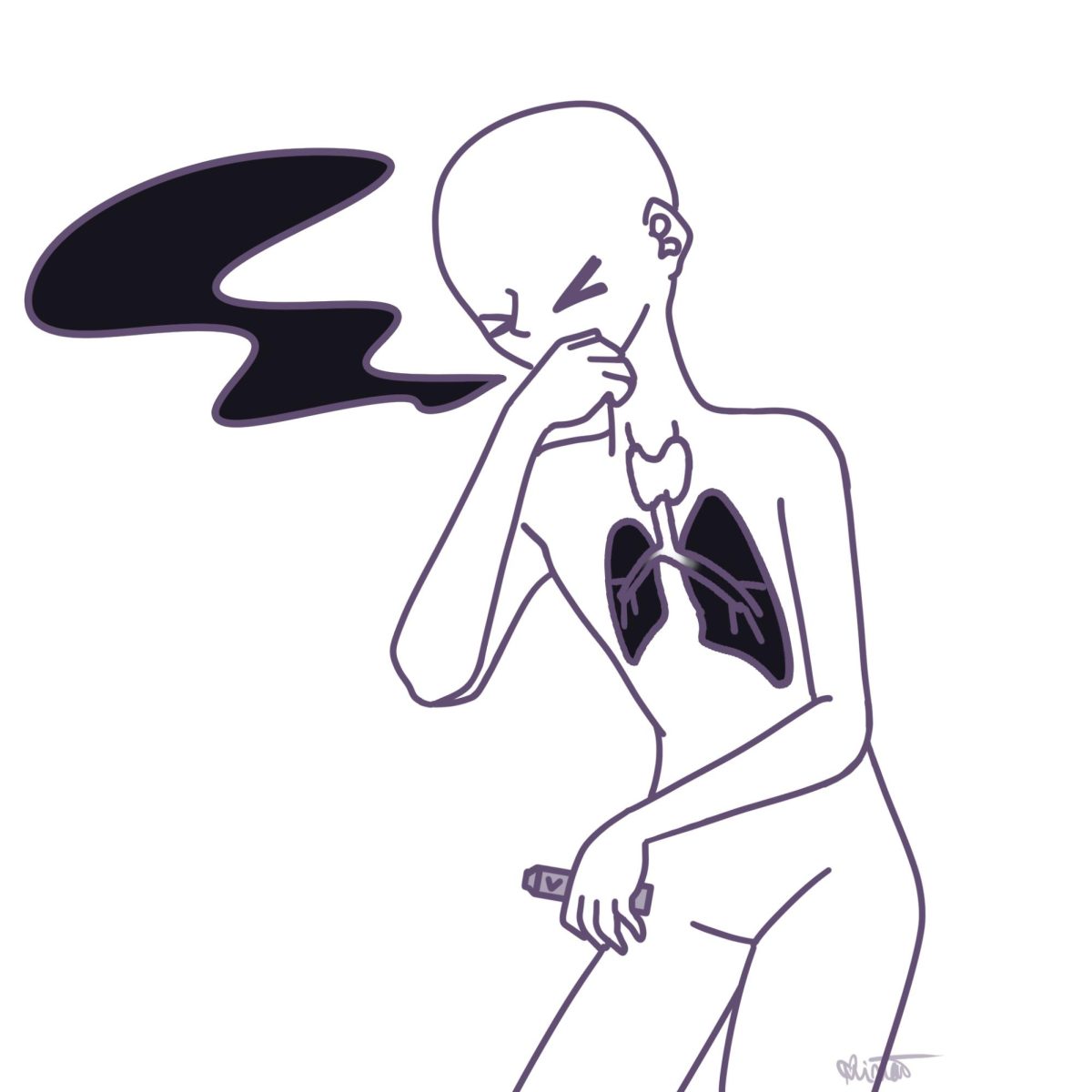“I don’t enter the school bathrooms.”
“There’s too much smoke.”
For junior Brandon Chu, vaping has served as a deterrent against entering bathrooms. But it’s not only a matter of taking away sanitation. It serves as an indication of the far-reaching effects of vaping on our school.
On June 13, 2023, Texas Legislature passed House Bill 114 in an attempt to address this issue. It requires that a student be removed from class and placed in a disciplinary alternative education program for the possession, use or delivery of e-cigarettes within 300 feet of school ground.
It has good intentions. But bad execution.
The policy is grounded in the idea that a harsh punishment will have a deterrent effect on student misbehavior, but this is simply not true. Indeed, the numbers disprove it. Last year, we recorded a total of 99 vaping cases. However, in just a little over six weeks this year, we’ve already had 20 incidents, according to Assistant Principal Jesse Rivera. If this trend continues, we are on track to have almost 20 additional cases by the end of this year, even with the new bill.
The core issue remains that students who vape often do not believe they will be caught. This perception significantly undermines the anticipated deterrent effect intended by the bill.
They haven’t gotten caught in the past, and this bill doesn’t make it any different. Just like how Prohibition only pushed drinking “underground,” this bill similarly caused offenders to be more cautious instead of quitting.
Why?
Students often turn to vaping as an escape from the weight of their mental health struggles or as a way to conform and fit in. In these clouds of vapor, they seek solace and belonging. When forced to choose between facing a potentially severe punishment and escaping reality, many students choose the latter.
The bill only pushes students to be more discreet and careful in how, when and where they vape.

Advocates of the bill insist that sending students to DAEP will help rehabilitate them. However, disrupting education by sending them to an alternative school for 30 days isn’t the solution. According to a CSG Justice Center study, 23% of students who referred to DAEPs had future contact with the juvenile justice system, compared to just 2% of their non-disciplined peers.
It’s not hard to see why.
You take them out of the class. Put them in a restrictive environment. And somehow expect them to change.
That’s naive.
Students are escorted around, constantly monitored and forced to wear uniforms. In this stifling environment, students don’t grow, learn or change. In this stifling environment, the promise of academic progress and personal growth remains elusive. In this stifling environment, any chance of renewal is out of reach. Sending students here entraps them in a system more inclined towards entrenching their struggles than offering a chance at redemption.
DAEPs function as the critical juncture in the assembly line that transforms students into inmates.
Moreover, their academic future is hampered by the days outside the classroom. Students’ schedules must conform to the DAEP curriculum, often being forced to drop down to on-level classes or not take them at all. This is because many DAEPs rely on Apex Learning, which often deviates from traditional classroom instruction, classwork and material.
According to a study by the Intercultural Development Research Association, “the DAEP programs currently in place in the state of Texas contribute to reductions in academic achievement and increased dropout rates among students referred to these centers.”
It isn’t rocket science. If you put people in a disciplinary school where they’re treated as prisoners, they fall behind.
Furthermore, placing non-violent vaping offenders in alternative schools initially established for students who committed criminal offenses like assault and gun violations propels these individuals to negative peer groups, where they gravitate toward even worse behaviors.
By throwing vapers into DAEPs, the bill only serves to exacerbate the behavioral problems they were meant to solve.
While the bill fails at reducing vaping, there are other methods that can make progress toward putting out the smoke. To truly address the reasons why students are not scared to vape, we must look at the underlying issue that has normalized vaping.
The lack of awareness of the detrimental effects of vaping.
Rather than sending vapers to DAEPs where they never truly learn why their actions were harmful, send them to vaping education programs. Knowing that what you’re doing can lead to seizures, to heart attacks, to lung cancer is a way better deterrent than some harsh punishment.
And unlike DAEPs, these programs have proven to be effective. According to a study in the Preventative Medicine Reports, even short-term programs result in a significant change in the perception of students on the use of vapes. Instead of treating vapers as criminals, we need to recognize that they are just students who need our support.
Extinguish the smoke with knowledge, not punishment.











